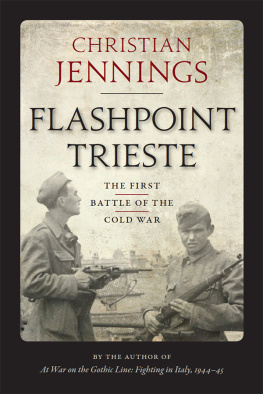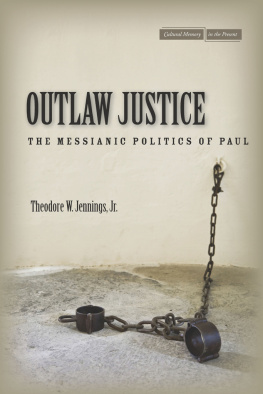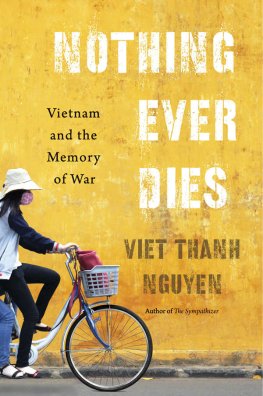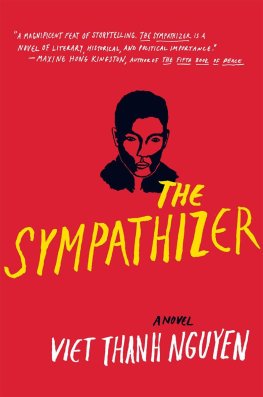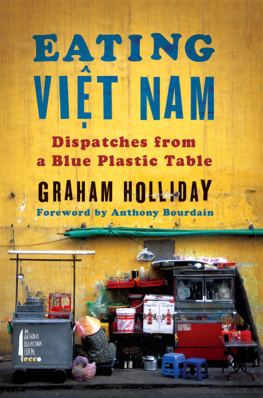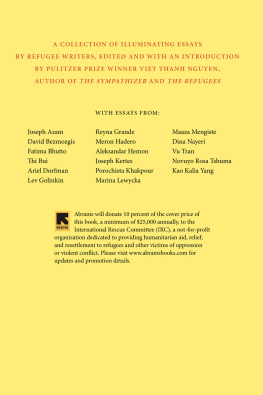The publisher gratefully acknowledges the generous support
of the Ahmanson Foundation Humanities Endowment Fund
of the University of California Press Foundation.
Imperial Heights
FROM INDOCHINA TO VIETNAM: REVOLUTION
AND WAR IN A GLOBAL PERSPECTIVE
Edited by Fredrik Logevall and Christopher E. Goscha
1. Assuming the Burden: Europe and the American Commitment to War in Vietnam, by Mark Atwood Lawrence
2. Indochina: An Ambiguous Colonization, 18581954, by Pierre Brocheux and Daniel Hmery
3. Vietnam 1946: How the War Began, by Stein Tnnesson
4. Imperial Heights: Dalat and the Making and Undoing of French Indochina, by Eric T. Jennings
Imperial Heights
Dalat and the Making and Undoing of French Indochina

Eric T. Jennings

Parts of chapters 7, 8, and 13 appeared in previous form in Historical
Reflection/Rflexions historiques, Modern Asian Studies, and The Journal
of Vietnamese Studies, respectively.
University of California Press, one of the most distinguished university presses in the United States, enriches lives around the world by advancing scholarship in the humanities, social sciences, and natural sciences. Its activities are supported by the UC Press Foundation and by philanthropic contributions from individuals and institutions. For more information, visit www.ucpress.edu .
University of California Press
Berkeley and Los Angeles, California
University of California Press, Ltd.
London, England
2011 by The Regents of the University of California
Library of Congress Cataloging-in-Publication Data
Jennings, Eric Thomas.
Imperial heights: Dalat and the making and undoing of French
Indochina / Eric T. Jennings.
p. cm.(From Indochina to Vietnam : revolution and war in a global perspective; 4)
Includes bibliographical references and index.
ISBN 978-0-520-26659-9 (cloth : alk. paper)
1. Lat (Vietnam)History. 2. Lat (Vietnam)Colonial influence. 3. FranceColoniesAsiaHistory. I. Title.
DS559.93.D3J46 2011
959.76dc22 2010042773
Manufactured in the United States of America
19 18 17 16 15 14 13 12 11
10 9 8 7 6 5 4 3 2 1
This book is printed on Cascades Enviro 100, a 100% postconsumer waste, recycled, de-inked fiber. FSC recycled certified and processed chlorine free. It is acid free, Ecologo certified, and manufactured by BioGas energy.
For Chantal and Larry
CONTENTS
5. Colonial Expectations, Pastimes, Comestibles,
Comforts, and Discomforts
7. A Functional City?
Architecture, Planning, Zoning, and Their Critics
10. Some Colonial Categories:
Children, European Women, and Mtis
ILLUSTRATIONS
FIGURES
MAPS
FOREWORD BY THE SERIES EDITORS
Cities have received relatively little attention in the history of the French empire in general and that of colonial Indochina in particular. True, Philippe Papin and William Logan have provided us with excellent overviews of Hanoi, and Vietnamese scholars such as Tran Huy Lieu, Tran Van Giau, and Dang Phong have penned engaging accounts of Hanoi and Saigon through the centuries. However, one searches in vain for an account of the colonial cityits social, political, cultural, and economic dynamics, as well as its postcolonial transformations.
With Imperial Heights: Dalat and the Making and Undoing of French Indochina, Eric Jennings provides just such a study. Rather than focusing on Saigon or Hanoi, Jennings gives us the first detailed account of the city of Dalat from its colonial conception in the late nineteenth century to its national promotion as a major tourist destination today. This city, located in the cool highlands of lower central Vietnam, was home to the first French hill stations, where colonizers came to seek relief from the stifling tropical heat. Such stations existed in various parts of the colonial world, and scholars (including Jennings himself) have written widely on their sociopolitical significance.was affected in important ways by both the French war and the American war that followed. Yet, as Jennings shows, it was well after the fighting ended that Dalat experienced some of its most important socioeconomic and cultural changes. Over the past two decades, as Vietnam has moved from a communist command economy to a remarkably vibrant market-oriented one, Dalat has adjusted accordingly, to the point that national authorities now celebrate its colonial and royalist past as part of their strategy of attracting tourists to this citys beautiful hotels and hill stations. Although Jennings uses Dalat to demonstrate the making and undoing of French Indochina, he concludes by showing how colonial nostalgia remains an important part of the making of Dalat today.
By focusing on a city and adopting a longue dure approach, Eric Jennings provides a new and powerful take on French colonial history and that of Vietnam. He has written an exciting and original book, expertly researched and beautifully crafted, one certain to appeal to general readers and specialists alike. We are proud to have it in our series.
Fredrik Logevall, Cornell University
Christopher Goscha, Universit du Qubec Montral
17 September 2010
Eric T. Jennings, Curing the Colonizers: Hydrotherapy, Climatology, and French Colonial Spas, Durham, N.C.: Duke University Press, 2006.
ACKNOWLEDGMENTS
This project could never have been realized without the Social Science and Humanities Research Council of Canada. SSHRC supported multiple research trips to Vietnam and France, and provided time off to write. The Canadian Institute for Health Research funded essential research for . A Victoria College Senate Research Grant and a Spooner Fellowship made possible further research at the French colonial archives and in Vietnam. A JIGES research award took me to sources in Zrich.
A special thank-you goes out to my research assistants, Nick Bentley, Chi Thuc Ha, Katie Edwards, Mairi MacDonald and Thuy Linh Nguyen. Thuy Linh Nguyen sifted through Vietnamese periodicals, newspapers, and poetry, as well as Vietnamese-language secondary sources, translating Dalat-related material into English.
Over the years, a community of colleagues has guided me towards sources on Dalat. Fruitful leads were provided by Hazel Hahn, Christopher Goscha, Agathe Larcher-Goscha, Laurence Monnais, Hy Van Luong, Nhung Tran, Christina Firpo, Penny Edwards, David Del Testa, Robert Aldrich, Gilles de Gants, Pascal Bourdeaux, Patricia Lorcin, Stein Tnnesson, David Biggs, Sbastien Verney, Caroline Herbelin, Philippe De Villers, Erica Peters, Pierre Brocheux, Alain Ruscio, Aline Demay, Rebecca Rogers, Ellen Furlough, Mathieu Gurin, Mitch Aso, Charles Keith, Jean Michaud, and Mike Vann. Mr. Jacques Veysseyre opened his fathers papers to me. J. P. Daughton, Tina Freris, Christopher Goscha, Peter Zinoman, Raphalle Branche, David Marr, Owen White, Emmanuelle Saada, Panivong Norindr, Alice Conklin, Elspeth Brown, Paul Cohen, Chantal Bertrand-Jennings, Larry Jennings, and an anonymous reader all provided valuable feedback on chapter drafts or presentations that later turned into chapters. Librarians and archivists on several continents have helped along the way: I wish to extend my thanks to Torontos Interlibrary Loan Services, and to the staff at Cornells Kroch Library, perched atop a pine-covered hill overlooking a lake that calls to mind Dalat.
Next page

